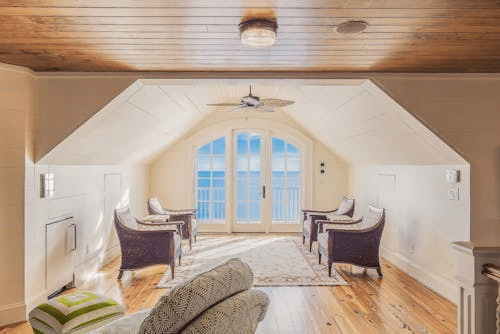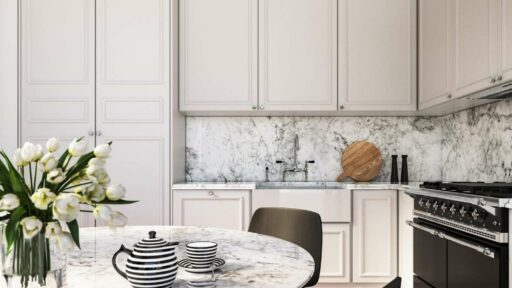Choosing the right dining chairs is an important decision. They need to be both comfortable and visually appealing, as they set the tone for your entire dining room. More homeowners are turning to chairs made from natural materials, which bring warmth, texture, and an organic feel to any space.
Natural dining chairs aren’t just a passing trend — they’re a way to make your home feel grounded and connected to the beauty of the outdoors. Materials like rattan, bamboo, and various natural weaves offer incredible style options and remarkable versatility, fitting seamlessly into design aesthetics from modern farmhouse and boho to coastal.
Let’s explore some of the most popular natural options, including woven designs, classic rattan, sustainable bamboo, and how different finishes can completely transform the look.
Woven Dining Chairs – Texture and Versatility
Woven dining chairs offer incredible visual interest. The term “woven” encompasses various techniques that describe how fibers are interlaced to create a sturdy and visually appealing surface. Weaving is often used for the seat or back of the chair, though sometimes the entire frame features woven elements.
These chairs are typically made from materials like seagrass, paper cord, natural grasses, or even thin leather strips. Each material creates a distinct look and feel. Seagrass has a slightly rougher, more casual texture, while paper cord — often seen in Danish-style furniture — is smooth and exceptionally durable.
The standout feature of natural dining chairs is their texture. It breaks up the smoothness of wooden or glass dining tables, adding a layer of sophistication that makes the chair feel more comfortable just by looking at it. These chairs are surprisingly strong, thanks to the tight weave, which provides excellent support, and they are also lightweight.
Woven chairs work beautifully in a variety of settings — from bright, airy sunrooms to cozy kitchen nooks and formal dining rooms. One of their biggest advantages is their unique quality: no two woven chairs are exactly alike. The handcrafted nature means you’re getting furniture with genuine character and craftsmanship that guests will notice. Woven dining chairs are an investment that pays off in both style and durability.
Dining Room Chairs Rattan – Timeless Appeal
Rattan is a climbing palm that grows in tropical regions and is one of the oldest materials used for furniture. While rattan furniture has experienced numerous waves of popularity over the years, it has never truly gone out of style.
Why is rattan so popular for dining chairs? It’s incredibly durable and flexible, allowing artisans to bend and shape it into elegant, complex designs featuring beautiful curves and intricate scrollwork. Natural rattan has a warm, light tan color with a beautiful natural sheen.
When you choose rattan dining room chairs, you’re investing in longevity. These chairs are designed to withstand daily use while remaining lightweight, thanks to their exceptional strength, making them easy to move around. They’re perfect for homes where the dining space serves multiple purposes.
Rattan dining chairs Dubai come in different forms. Sometimes the frame is constructed from solid rattan poles, while other designs feature woven rattan peel — the outer skin of the vine used to wrap joints and create seats and backrests. This combination of materials gives rattan chairs their distinctive look: robust yet delicate in appearance. They’re a classic choice that always looks fresh and current.
Wicker Dining Chairs – Understanding the Difference
Many people confuse rattan and wicker, which is an easy mistake to make. The key difference is simple: rattan is a material, while wicker is a weaving process similar to basket weaving.
Wicker furniture can be made from various materials, including rattan, willow, reed, or even synthetic fibers. So a chair can be made of rattan material using the wicker weaving technique, which is why the two terms are often used interchangeably.
When we discuss wicker dining chairs, we focus on the weave itself. The wicker weave creates a distinctive, often open pattern that makes chairs look airy and feel light and summery. While commonly seen on porches and patios, they’re also a wonderful choice for indoor dining.
Indoor wicker chairs are typically crafted from finer, more delicate materials than their outdoor counterparts, enabling intricate designs that create a beautiful backdrop for any meal. Their open weave can make a smaller dining room feel more spacious by allowing light to pass through the furniture.
Wicker chairs come in many finishes. They’re often left in their natural color, but they can also be painted. White wicker creates a classic, crisp, clean aesthetic, while darker hues give them a more modern edge.
A popular wicker dining chair design features high backs that offer good support and create a dramatic look at the dining table. They’re a perfect choice if you want to add texture and an artisanal feel to your space.
Bamboo Dining Room Chairs – Sustainable Strength
Bamboo is an incredible natural material — it’s actually a type of grass known for its remarkably fast growth, making it an extremely sustainable furniture choice. It regenerates quickly, offering an eco-friendly option for environmentally conscious consumers.
But bamboo isn’t just sustainable — it’s also exceptionally strong. It has been used in construction for thousands of years, and its combination of strength and light weight makes it ideal for chairs, creating furniture that’s both durable and easy to handle.
Bamboo dining room chairs have a distinctive appearance. Bamboo poles are hollow with natural joints along their length, and when used in furniture, these joints become part of the design, giving chairs a relaxed, almost tropical feel.
Bamboo can also be bent and shaped, so it’s often used for chair frames, while seats and backs are filled with woven rattan or cane. This combination brings together the best of both materials: the strength and clean lines of bamboo with the intricate texture of weaving.
Bamboo chairs fit perfectly into bohemian or coastal design schemes. They work beautifully with natural wood tables, creating a stunning contrast with sleek, modern ones. Caring for bamboo is simple — it’s naturally resistant to damage and usually only needs a quick wipe with a damp cloth.
Dark Dining Chairs – Creating Contrast
The world of natural dining chairs extends beyond light wood tones. Introducing color contrast can completely transform your dining area, which is where dark dining chairs come in.
Natural chairs don’t have to maintain their original light color. Rattan, wicker, and bamboo can all be stained or painted. Staining them to a deep walnut or espresso shade gives them an entirely new feel, adding drama and sophistication.
Why choose dark dining chairs?
- Creates Contrast. They stand out beautifully against light-colored dining tables. For example, dark rattan chairs around a bleached oak table create a stunning visual impact.
- Adds Formality. Dark furniture tends to appear more formal, making darker stains an excellent option for more elegant dining rooms.
- Hides Wear. Darker finishes are practical since they tend to hide small scratches and minor spills better than lighter finishes.
- Grounds the Space. In rooms with many windows or light-colored walls, dark chairs can anchor the space and clearly define the dining area.
Consider using dark dining chairs in a room with light walls and floors — the deep color will pop and draw the eye to the dining area, creating a clear focal point. You can also mix and match by using natural, light chairs for side seats and two dark chairs as end chairs, creating a layered, designer look.
Darker colors can be achieved with certain naturally dark woods, but for materials like rattan or bamboo, a rich stain is typically applied. This allows you to preserve the texture of the weave while gaining the depth of a darker color. This combination is highly effective, offering the best of both worlds: natural texture provides warmth, while the dark color adds elegance.
The final result is a beautiful blend of organic form and sophisticated color, demonstrating that natural materials aren’t limited to one style. You can adapt them to fit a wide range of interior designs — from warm and cozy to sleek and dramatic. The choice of finish makes all the difference.







